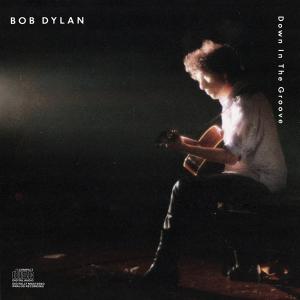
Down in the Groove (1988)

1. Let's Stick Together
2. When Did You Leave Heaven?
3. Sally Sue Brown
4. Death is Not the End
5. Had a Dream About You Baby
6. Ugliest Girl in the World
7. Silvio
8. Ninety Miles an Hour (Down a
Dead End Street)
9. Shenandoah
10.Rank Strangers To Me
This album marks a noticeable departure from the overly stylized, synth-infused eighties aesthetic that had plagued Dylan’s recent output. Instead, what emerges is a stripped-back and unpretentious effort, aiming for a more generic, arguably rootsier sound that fits Dylan’s persona far more comfortably. The result is sadly a bit dull, but it is, in many respects, a welcome recalibration.
Structurally, the album suffers from a lack of cohesion. One gets the impression that Dylan attempted to straddle too many styles, enlisting disparate musicians and production techniques in a bid for variety that ultimately undermines the overall experience. Down in the Groove swings stylistically like a pendulum—sometimes arresting, sometimes disjointed—rarely allowing the listener to settle into any consistent groove. Ironically, it’s this very unpredictability that gives it an odd charm, even as it resists memorability.
The ratio of original to borrowed material hovers around fifty percent, but with Dylan’s interpretative lens applied so thoroughly, it becomes difficult to distinguish which tracks are covers and which are not—a testament, perhaps, to his enduring ability to make material his own. Still, very little on this album stands out in either composition or execution. Melodically, many of the tracks are serviceable but pedestrian; the riffs feel recycled, the arrangements familiar to the point of anonymity.
A recurring motif is a gospel-tinged bombast—not lyrically insistent, but musically overbearing. The inclusion of soaring female backing vocals and swelling instrumentation evokes Dylan’s “Born Again” era, though here the spirituality seems more ambient than doctrinal. Tracks like Death Is Not the End and When Did You Leave Heaven? suggest a mood rather than a message—a half-glimpsed sanctity rather than full-blown sermonizing.
One can’t help but feel that a tighter focus—either thematically or musically—might have yielded a more satisfying listen. As it stands, the brevity of the album, combined with its unevenness, leaves the listener faintly unsated, as though having consumed a well-prepared but ultimately insubstantial meal. It’s a curious work: part resurrection, part experiment, and yet, somehow, neither wholly succeeds nor entirely fails.
Go back to the main page
Go To Next Review